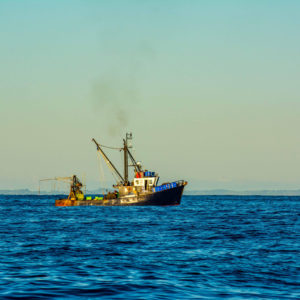A positive to come out of the latest round of stock reviews is the Minister’s commitment to change or revisit some long-standing practices that we have objected to for many years. These include truncated consultation timeframes, the inconsistency in setting aside allowances for fishing related mortality, and recognising that current fishing practices need to change.
Stuart Nash has promised to trial a longer consultation period during the next round of stock reviews. Our fisheries team have for years rallied against the short consultation timeframes. In more recent times that period has been shortened to just 18 working days. For non-commercial organisations 18 days is insufficient to consult with members, gather external expert advice, consult internally on a draft response, and develop a submission. Big tick to the Minister for this change.

In our July submissions we emphasised the need for a consistent approach to setting aside allowances in each fish stock for fishing related mortality. When deciding on a new Total Allowable Catch (TAC) the Minister is obliged to set aside three allowances, which are then deducted from the TAC to determine the Total Allowable Commercial Catch (TACC). It is important that the allowances for recreational and Maori customary fishing, and for other fishing related mortality, are sufficient to cover expected losses from the fishery due to fishing.
These allowances will always carry some levels of uncertainty because they are hard to quantify however, the random approach by Ministry was undermining management decisions. We supported the Minister setting aside a default of 10% of the TACC to account for mortality, submitting that any variation from the default would need to be explained.
For inshore stocks mainly taken by trawlers the Minister has decided the minimum allowance for fishing related mortality will be 10% of the TACC. There will be scope for changing the allowance, if there is adequate information to indicate the allowance ought to be more or less than 10%. This is progress.
Another indicator of his commitment is the requirement for commercial fishers to report all catch of fish that are below minimum legal size, as part of the digital monitoring roll-out programme. Having this information will help quantify the extent of undersize catch.
The high mortality rates of juvenile, undersize tarakihi due to the use of 100mm trawl cod ends was highlighted in our recent submission. This size mesh causes high mortality of small fish particularly off the east coast of the South Island where this size mesh is used and small fish are common. We noted the wasteful discarding of small, uneconomic catch has been prevalent in New Zealand’s commercial fisheries for over 100 years. It is good to finally get some real action to address wastage of our precious fish.
Innovation seems to be Nash’s key word at the moment. In his decision letter he notes “the way the majority of inshore finfish are caught is largely unchanged since the 1950s. The way we operated then is much less acceptable now”. Bang on Minister.
The Ministry is developing an advice paper on ways to encourage innovation and our fisheries experts from the New Zealand Sport Fishing Council look forward to having input into that process. The paper is due in early 2019. Let’s hope that real progress is achieved.




